Instruments
Pyranometers, pyrgeometers and pyrheliometers
Pyranometers and pyrgeometers measure the broadband shortwave and longwave global irradiance, respectively, while pyrheliometers measure the direct normal solar irradiance (DNI). At Lampedusa different models of pyranometers and pyrgeometers are used since 2004.Pyranometers
Eppley Precision Spectral Pyranometers (PSP), Kipp&Zonen CMP21 and CMP22, and YES Inc. TSP-7000 pyranometers are used for long-term measurements and for calibration purpose. The meteorological station is equipped with a Kipp and Zonen CM 11 pyranometer.
The PSP is a WMO good quality radiometer; the sensor is a thermopile, covered by two polished optical Schott glass domes. This configuration produces a uniform spectral responsivity throughout the region 0.28-2.8 micron.
The CMP21 is a high quality radiometer, with thermopile as sensing element enclosed in a glass dome and responsivity in the spectral interval from 0.31 to 2.8 micron. It is characterized by a lower offset compared to PSP.
CMP22 pyranometers have a quartz dome, with negligible thermal offset and better directional response compared to CMP21 models with glass dome. The spectral range of this high quality model is 0.2-3.6 μm.
The direction response of the CMP21 and CMP22 pyranometers is determined by the factory and provided to the user. The CMP21 and CMP22 models are equipped with a thermistor for the internal body temperature measurement, used to correct the instrument's sensitivity determined at +20 °C.
The TSP-700 pyranometer, unlike other pyranometers, uses a rugged solar radiation-receiving surface that is thermally bonded to modern thin-film platinum resistance thermometers to make the actual temperature measurements. So it nominally has an excellent cosine response.
The CM 11 is a secondary standard pyranometer. The sensor is covered by two optical glass domes, and is sensitive to radiation between 0.3 and 2.8 micron.
Next Gantt charts shows the periods of operation of some models of pyranometer available at Lampedusa.
Pyranometers installed at Lampedusa, with model and serial number. Grey areas represent the periods of installation for global irradiance measurements, while yellow areas the periods of installation on the solar tracker for diffuse irradiance measurements. Green areas represent the period of installation on the meteorological tower for the reflected irradiance component.
Pyrgeometers
The Eppley Precision Infrared Radiometer (PIR) is used for the measurement of the broadband infrared radiation. The PIR is sensitive to radiation between 4 and 50 micron. It is constituted by a thermopile sensor, covered by a silicon dome, internally coated with an interference filter with a transmission range of approximately 3.5 to 50 micron. The sensor measurement is corrected by the body and the dome thermal emissions: for this purpose a case and a dome thermistors are provided.
The Kipp&Zonen CGR4 pyrgeometer model has a thermopile sensor covered by a meniscus silicon dome coated by hard-carbon on the outside and by a solar blind interference filter on the inside, transmitting only radiation between 4.5 and 42 μm. The window heating effect is very low compared to the other pyrgeometers, thus eliminating the need for compensation by using the correction formula and dome temperature sensors.
Next Gantt charts shows the periods of operation of some models of pyrgeometer available at Lampedusa.
Pyrgeometers installed at Lampedusa, with model and serial number. Grey areas represent the periods of installation on the table, while yellow areas the periods of installation on the solar tracker. Green areas represent the period of installation on the meteorological tower for the LW irradiance emitted from the surface.
Pyrheliometer
The CHP1 pyrheliometer measures the direct component of the solar irradiance. The instrument has a field of view limited to 5°. The front aperture is fitted with a quartz window to protect the instrument and to act as a filter that passes solar radiation between 200 nm and 4000 nm.Setup
Pyranometers and pyrgeometers measurements of downward SW and LW irradiance, respectively, started in June 2004.
Pyranometers and pyrgeometers are all ventilated and can be also heated to minimize the effect of varying external temperatures and to prevent dew formation and/or dust deposition on the dome.
In March 2006 a 2AP Kipp&Zonen solar tracker was installed to host shaded pyranometers and pyrgeometers and up to two pyrheliometers. The shaded pyranometer measures the diffuse SW component, since the direct one is blocked. The shaded pyrgeometer gives a more accurate measurement of the downward LW irradiance compared to the pyrgeometer on the table, since the small infrared component of the SW irradiance is blocked.
In addition, a Kipp&Zonen CHP1 pyrheliometer was installed on the solar tracker in June 2011.
Recently, a Delta-T SPN1 radiometer has been put in operation. This particular instrument is able to simultaneously measure the global and diffuse SW irradiance without moving parts, thanks to a shading pattern and seven sensors arranged so that at least one is exposed to the direct solar radiation and one is shaded.

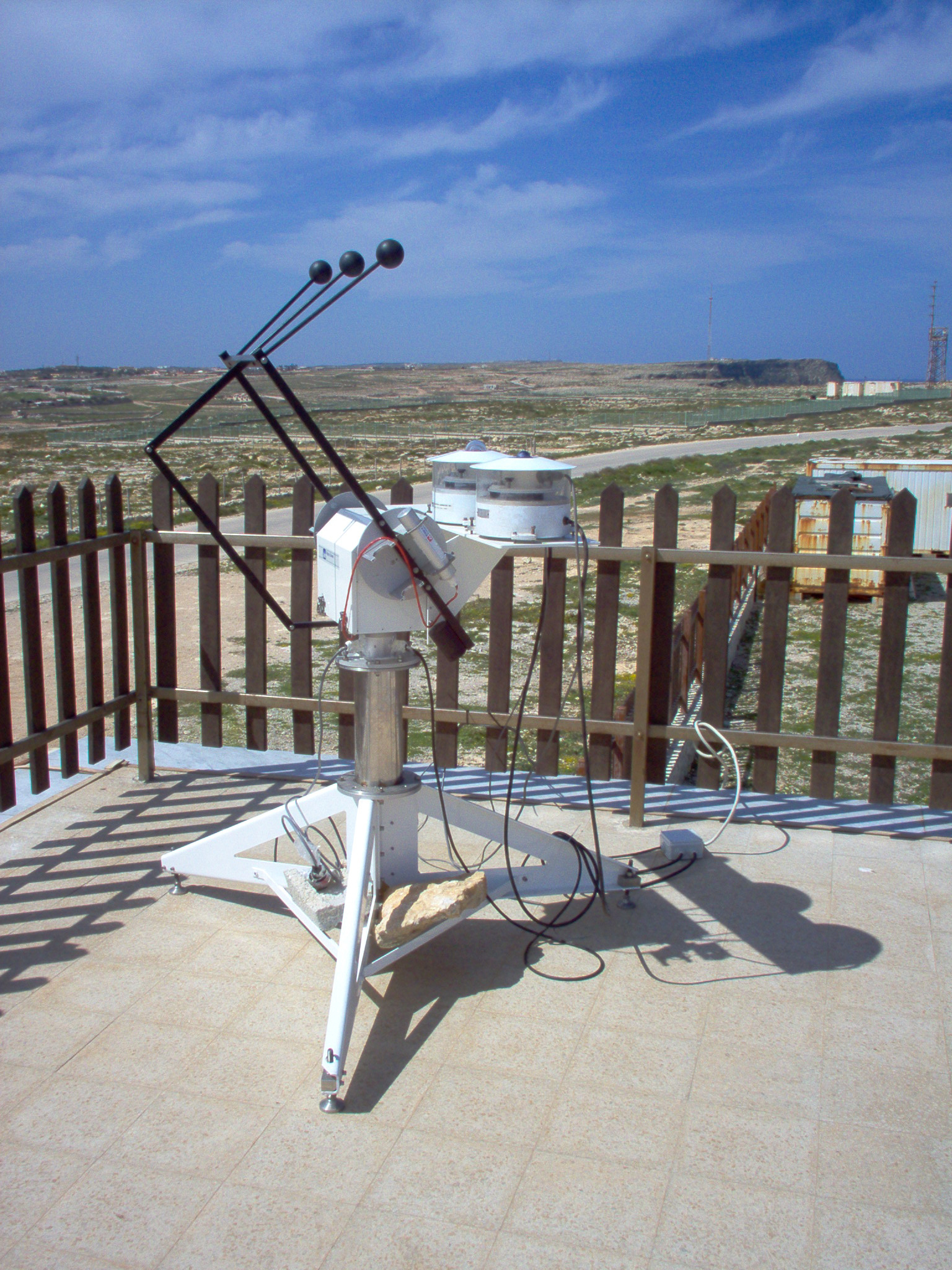
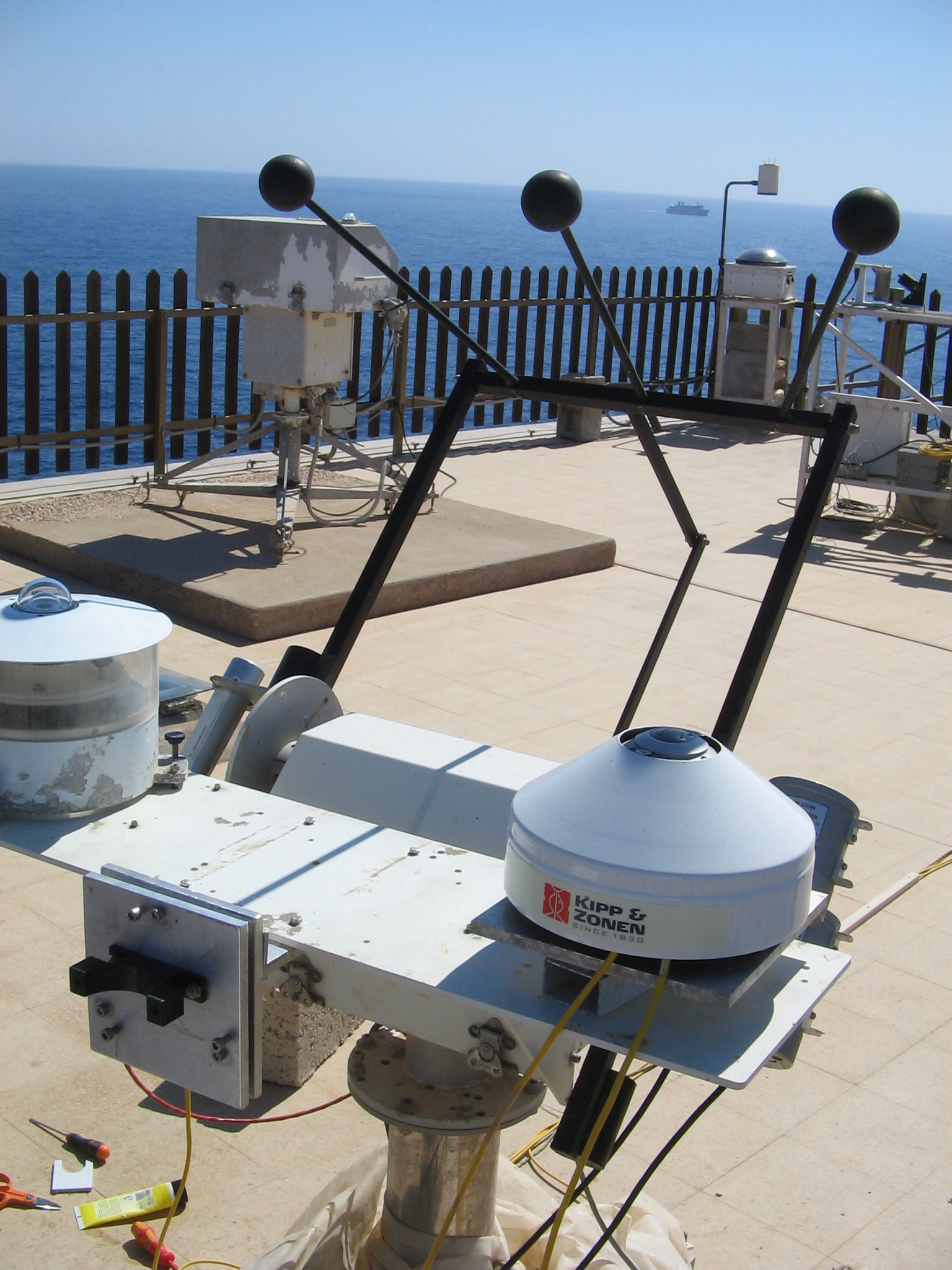
View of the radiometers on the roof of the laboratory, including those installed on the solar tracker.
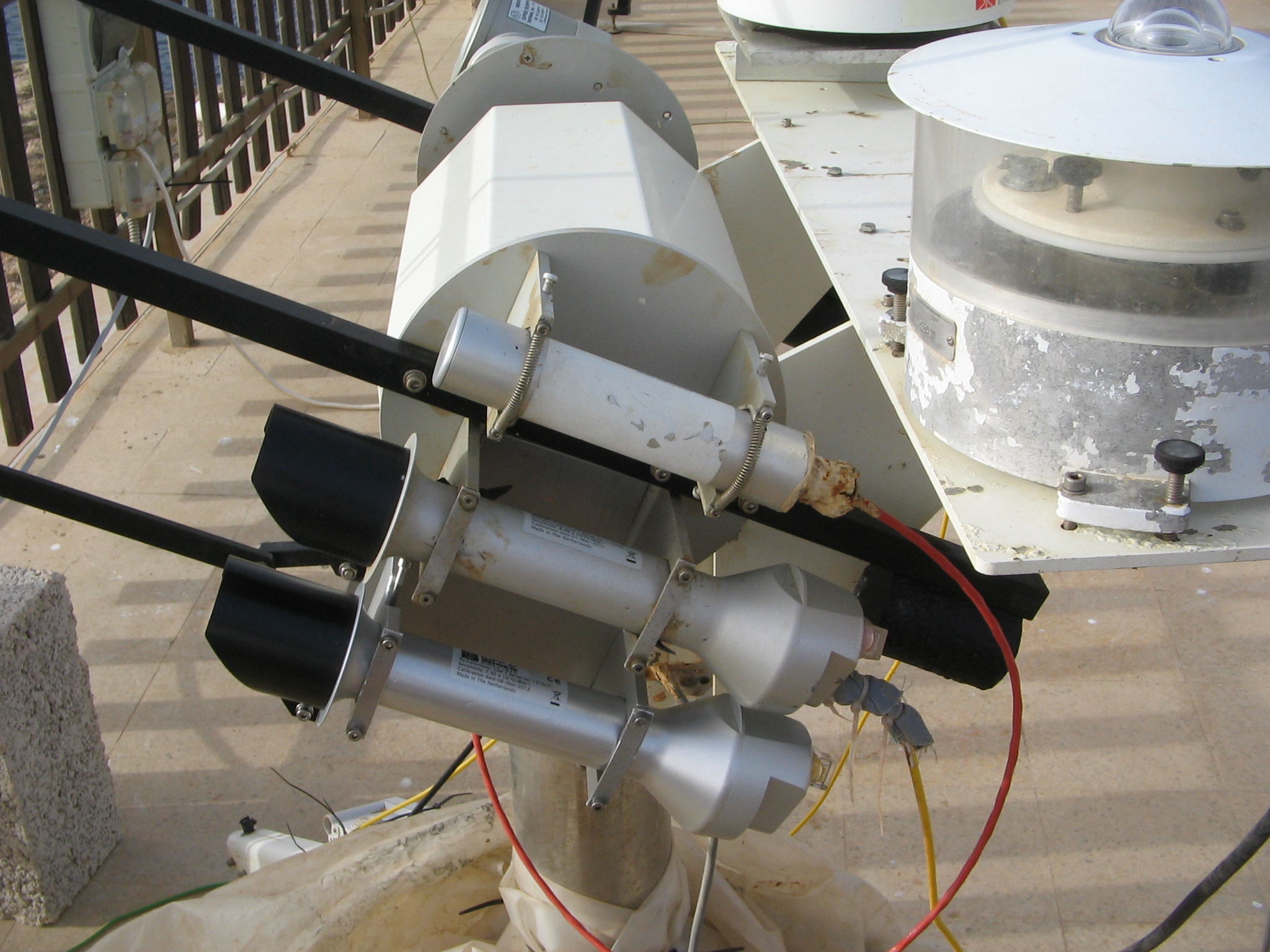
Picture of the two pyrheliometers installed on the solar tracker.
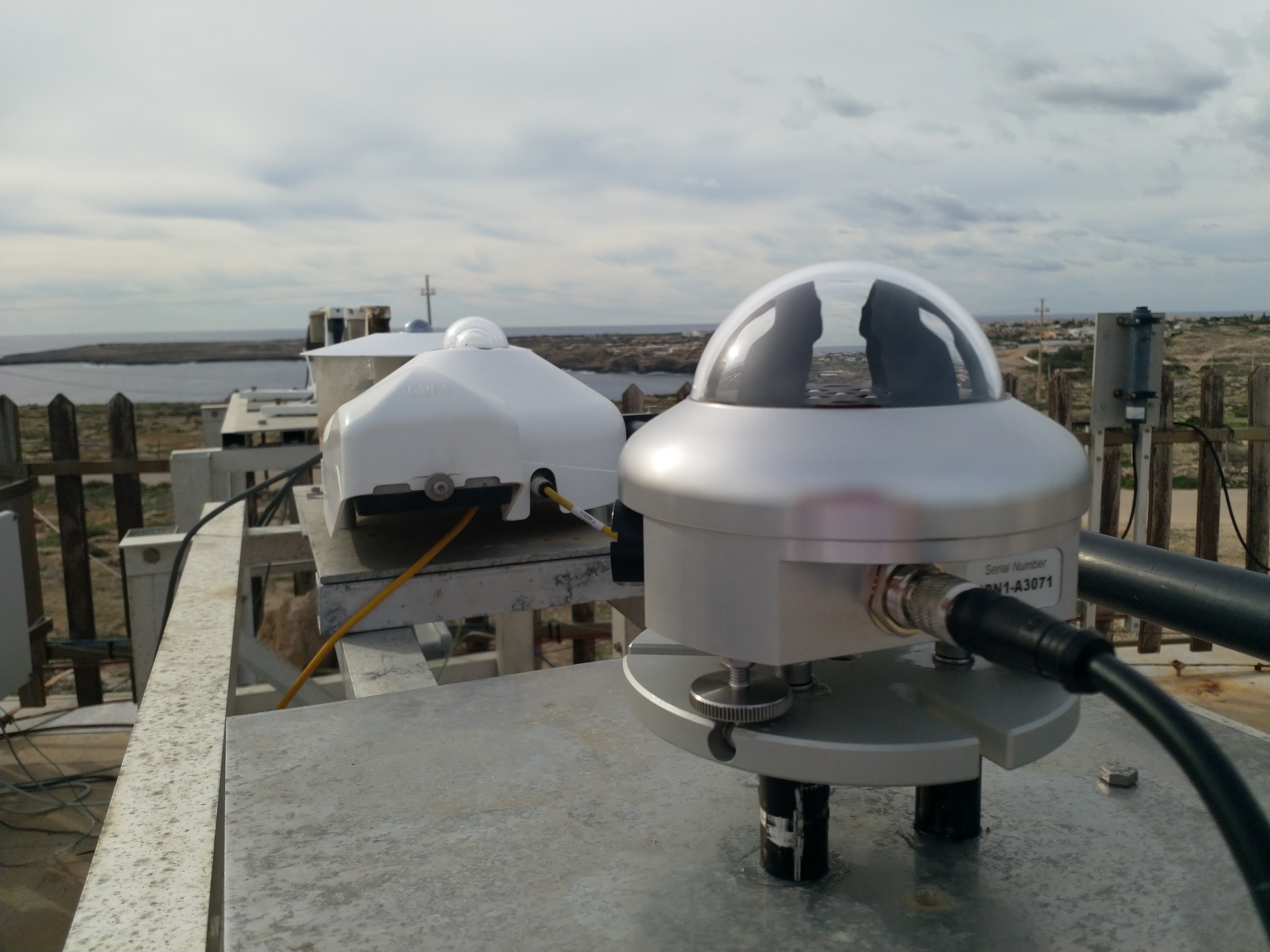
Picture of the SPN1 radiometer close to the CMP22.
In May 2016 a PSP and a PIR have been installed on the meteorological tower at about 2.5 meters above the ground to measure the upward component of the shortwave and longwave irradiance, respectively.
Such measurements allow to study the surface radiative budget and to monitor changes in the broadband surface albedo.
Periodical calibrations to the PMOD/WRC center and/or intercalibrations at Lampedusa of all radiometers ensure the accuracy and reliability of the shortwave and longwave irradiances.
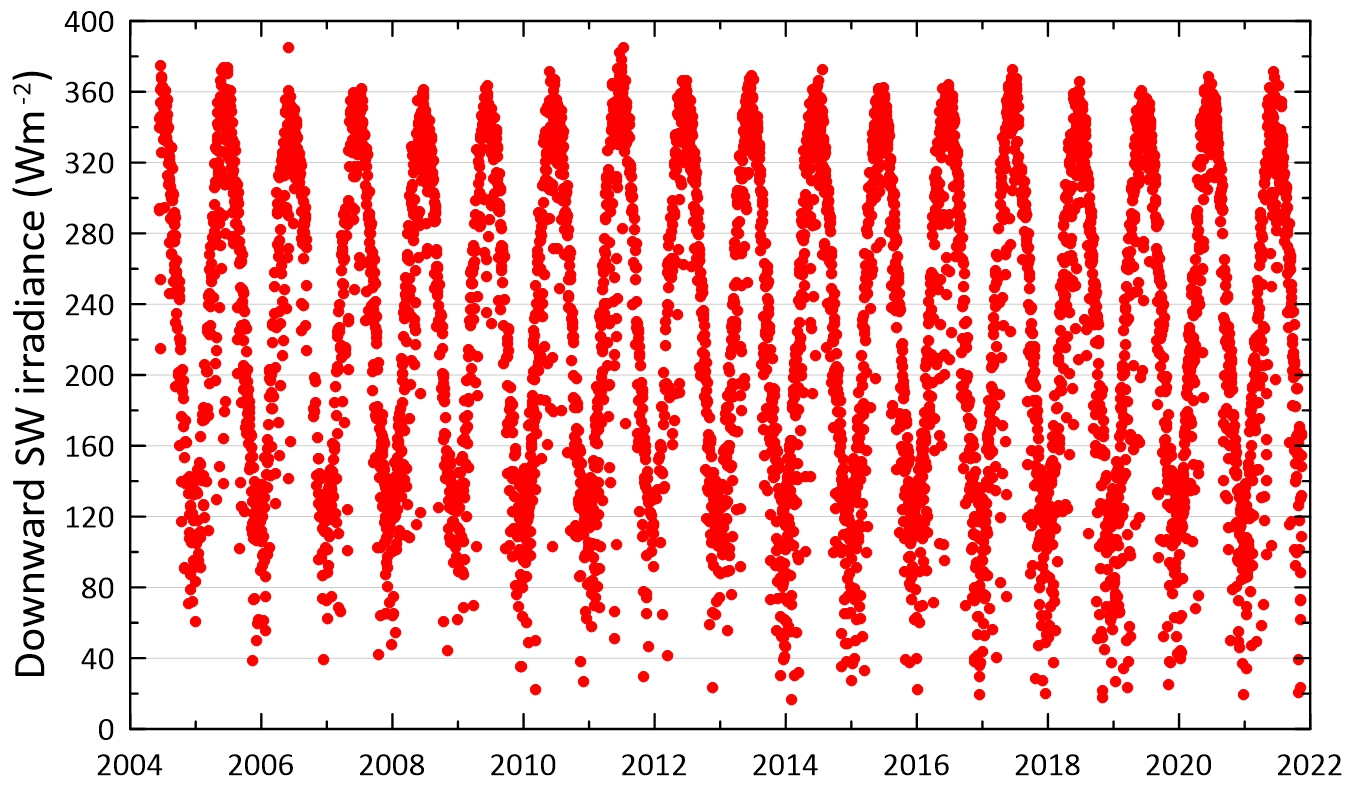
Time series of downward global shortwave irradiances 2004-2021 (daily means).
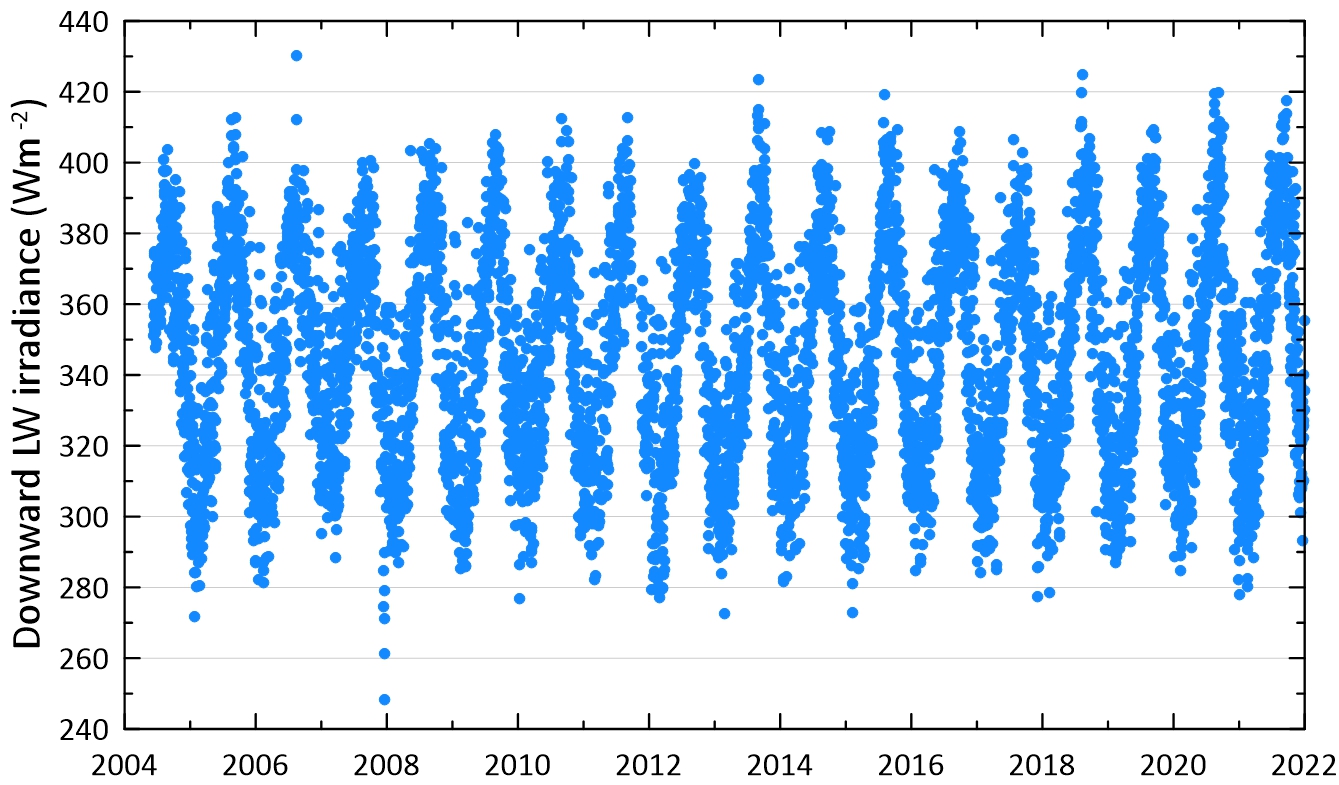
Time series of downward longwave irradiance 2004-2021 (daily means).
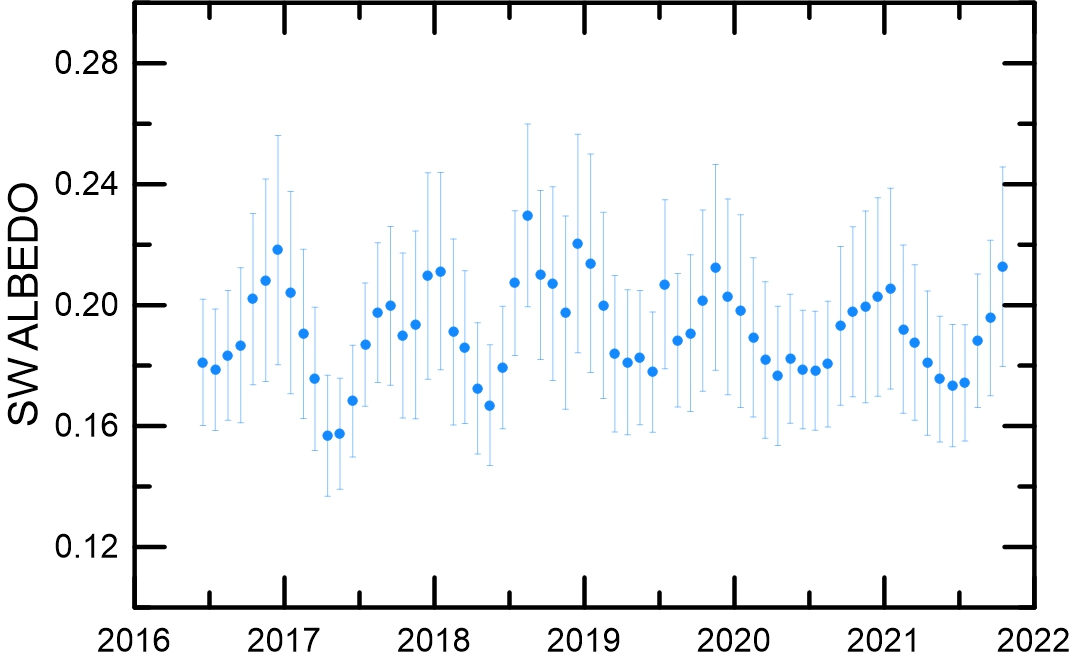
Time series of the shortwave surface albedo 2016-2021 (monthly means).
